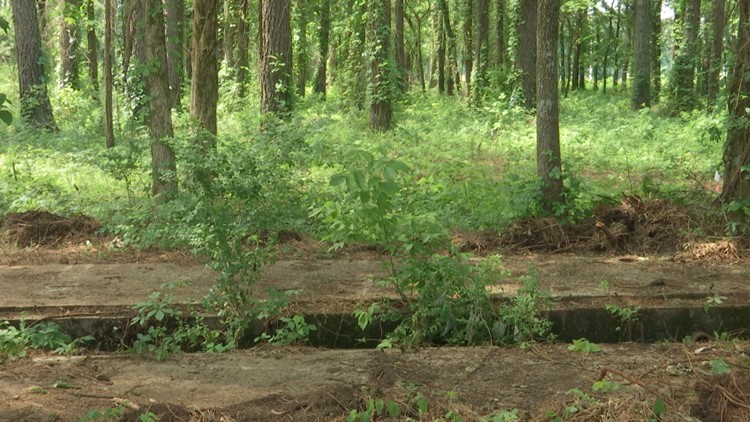Some of the world’s most lethal chemical weapons are buried in trenches at Redstone Arsenal, leftover from WWII.
Teams with the U.S. Army are testing and will soon clean the soil to prevent contaminates from seeping into our drinking water.
Large sections of Redstone Arsenal are chemical cleanup sites.
Miles-long trenches were developed on the Arsenal to store and destroy toxins like nerve agents, smoke bombs and goop, chemicals similar to napalm.
Chemicals that can be detrimental to humans.
Jason Watson is an Environmental Protection Specialist with the U.S. Army, and he said, “What’s important to us and what’s important to the state is that these disposal areas left over from WWII and the ’50s and ’60s represent potential sources to ground water.”
The cleanup process is very calculated with historic research required before digging.
Some sites were designated as German POW camps.
“Almost anything that was used on the Arsenal during WWII has the potential to be here at Redstone, ” said Watson.
At least 21 locations are undergoing testing.
Chemicals are identified.
Each site has its own risk.
Remedies are based on which chemicals are found.
“What we have, we have waste in the ground without any type of guarding against it,” said Watson.
The southeast area of Redstone Arsenal is where some of the highest levels of contaminants are found, but right now they do not pose a risk to any nearby neighborhoods.
Dave Whitehead lives in South Huntsville and said, “I hadn’t heard anything about the removal or decontamination.”
The project has an estimated 30-year timeline with a completion date set for 2042.
Outside the gates in the Rocket City, not many are aware of the chemicals and question recent water troubles in the country.
“If they didn’t contain it, a lot of it has already run out I’m sure. We have probably already suffered from that, how much I don’t know, ” said Whitehead.
Redstone says its effort is to keep people informed and keep the chemicals on the arsenal contained.
The Installation Restoration Program started in 1994, when researchers began investigating contamination sites.
Thousands of buried chemical weapons are believed to still be intact on the Arsenal.
Huntsville water threatened by chemical weapons buried at Redstone
Teams with the U.S. Army are testing and will soon clean soil on Redstone Arsenal to prevent contaminates from seeping into drinking water.



